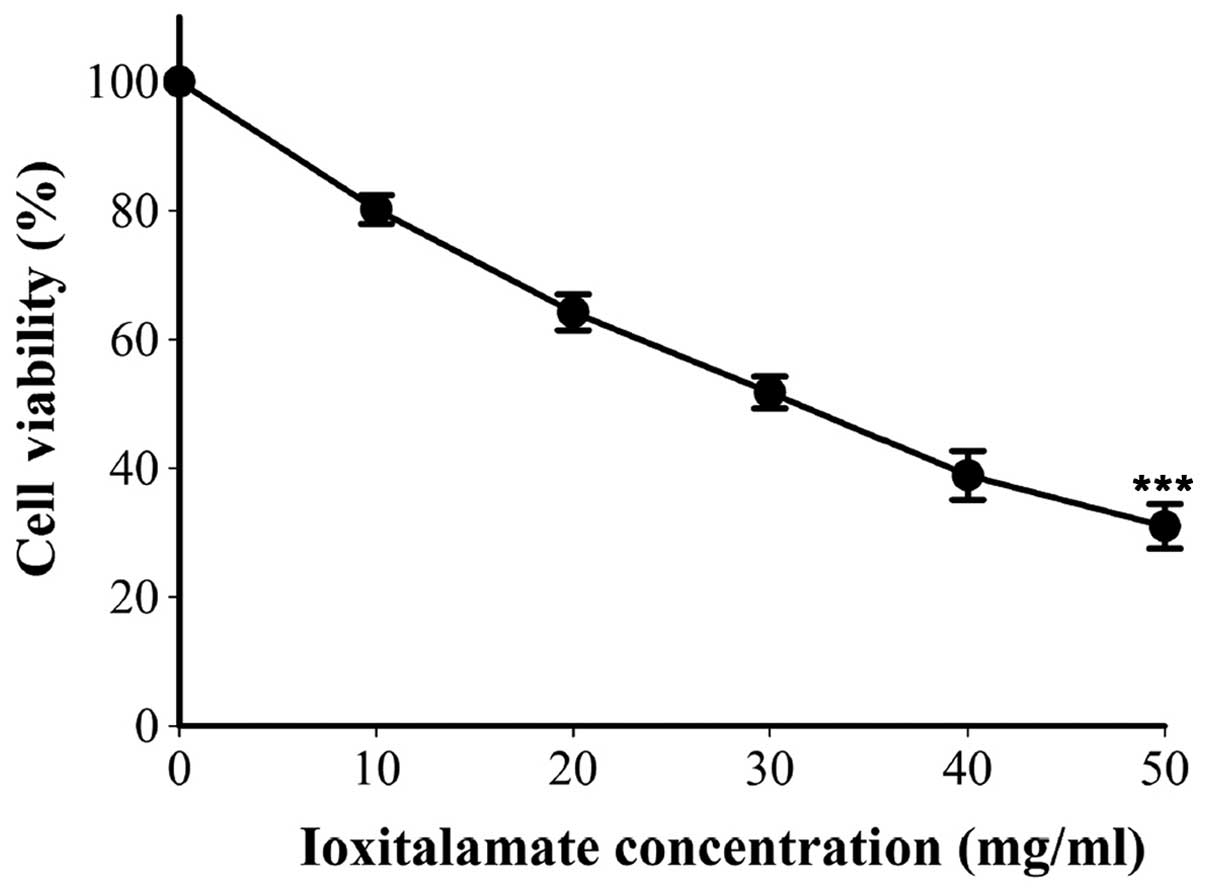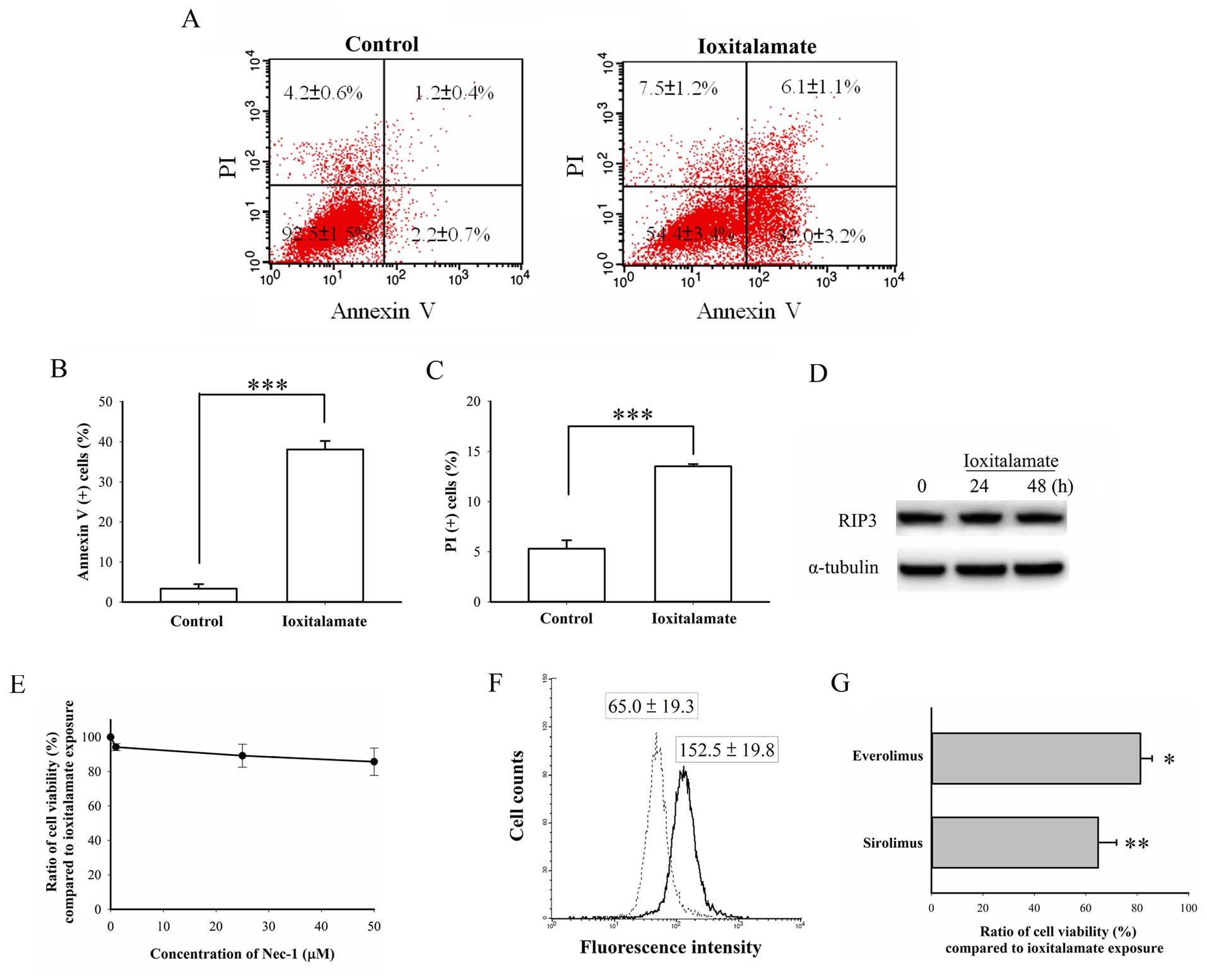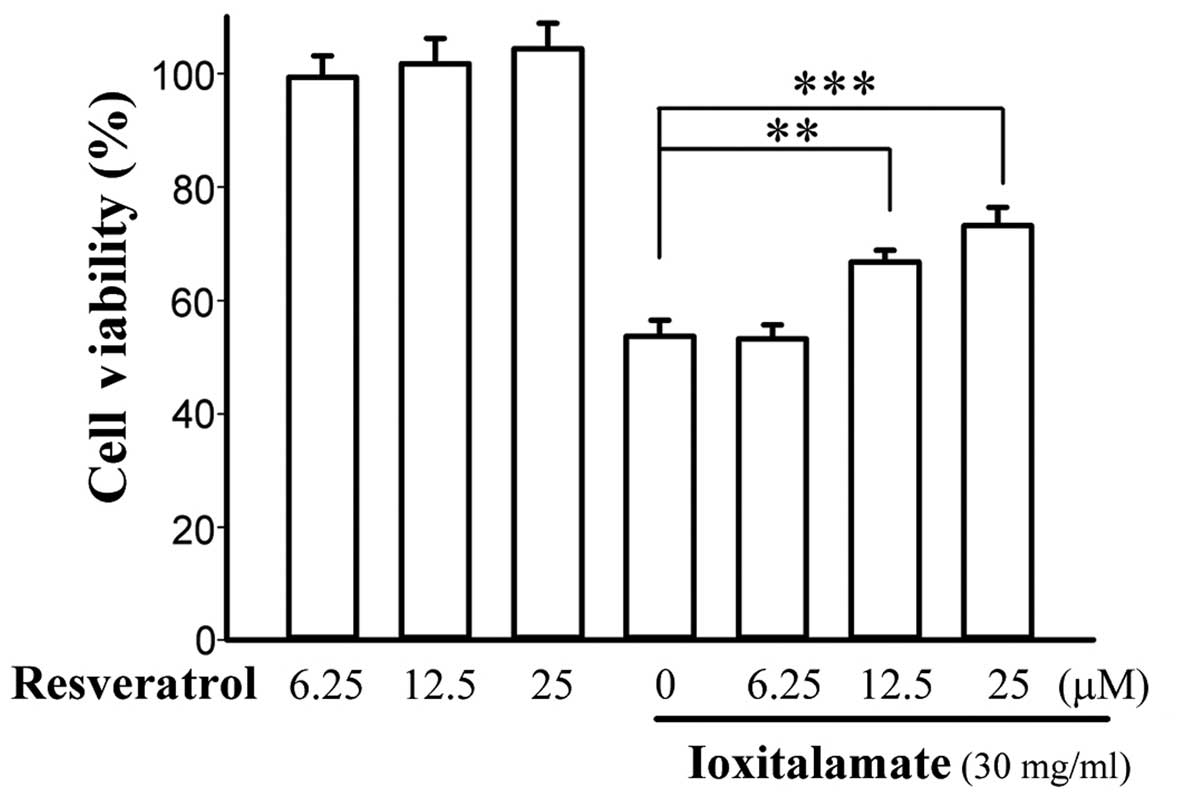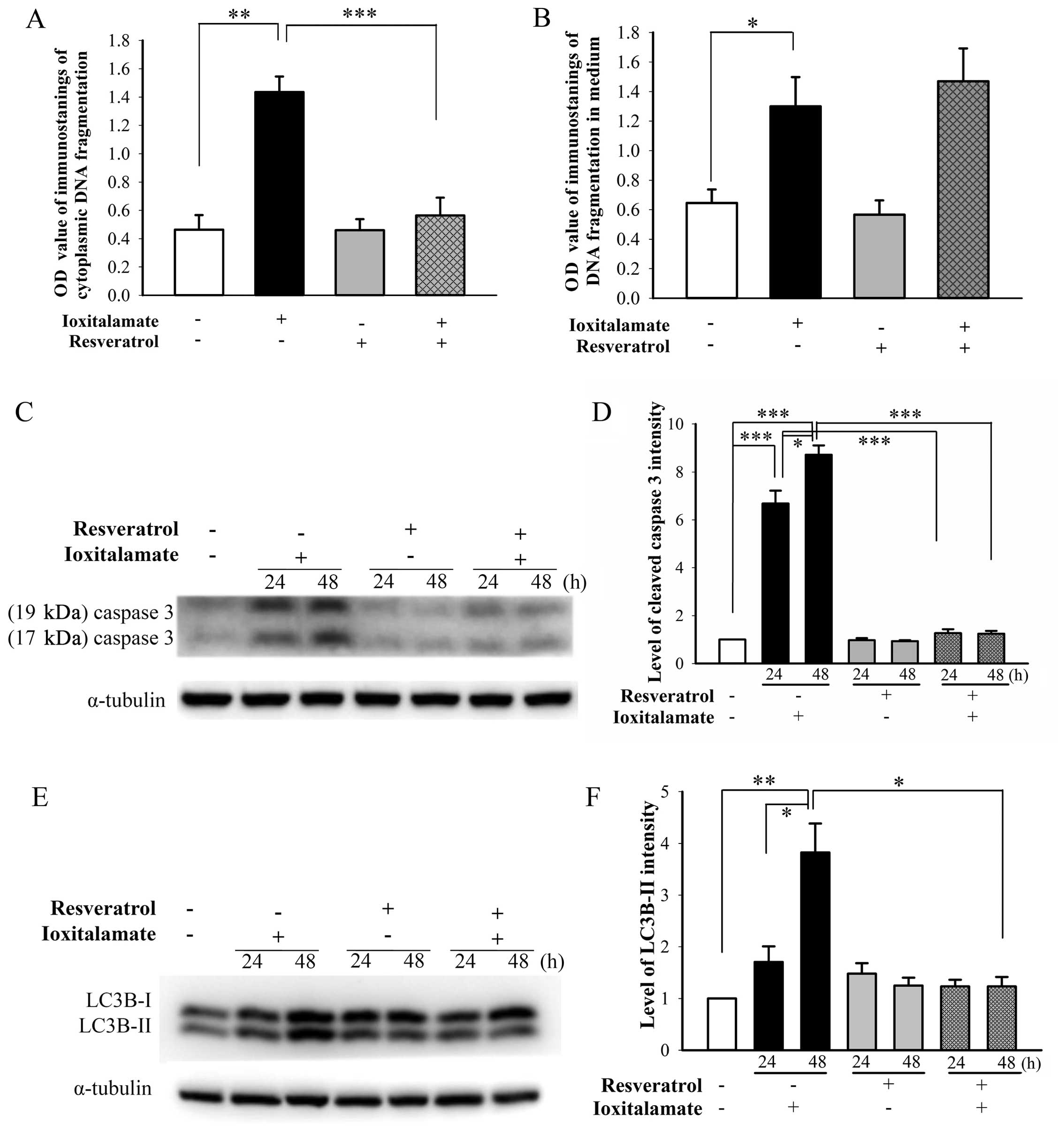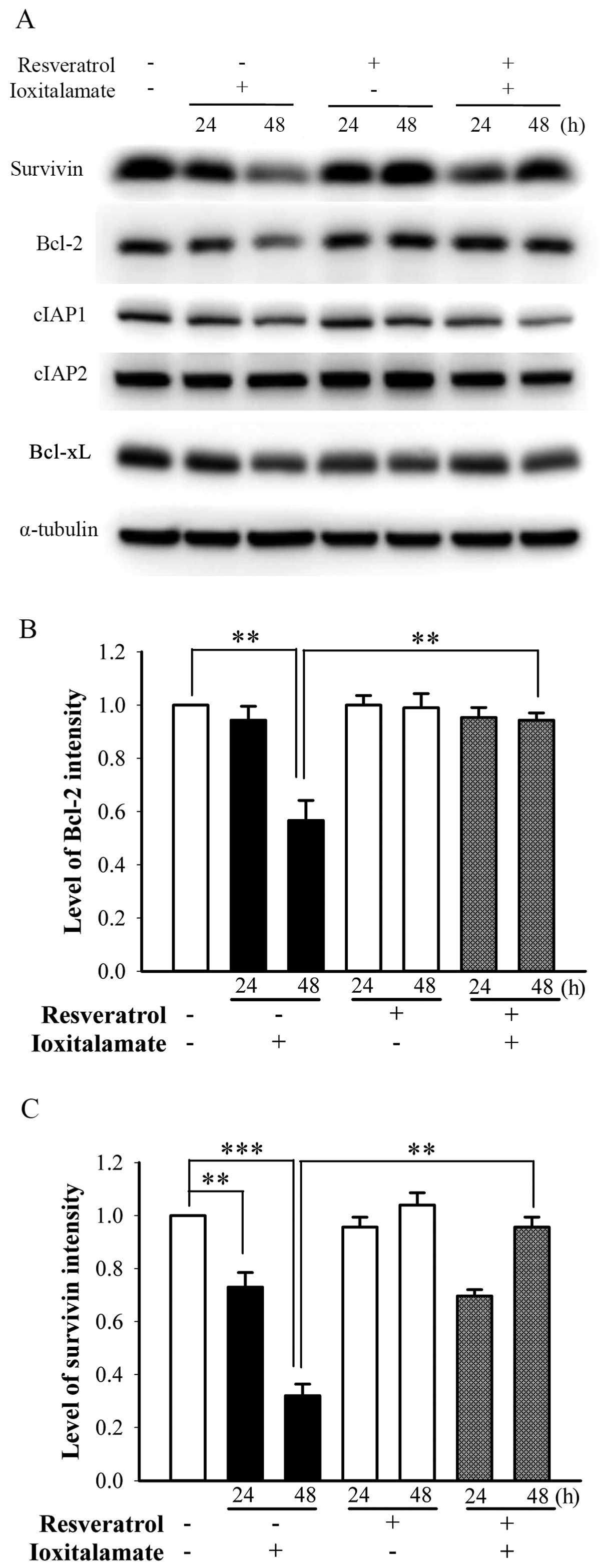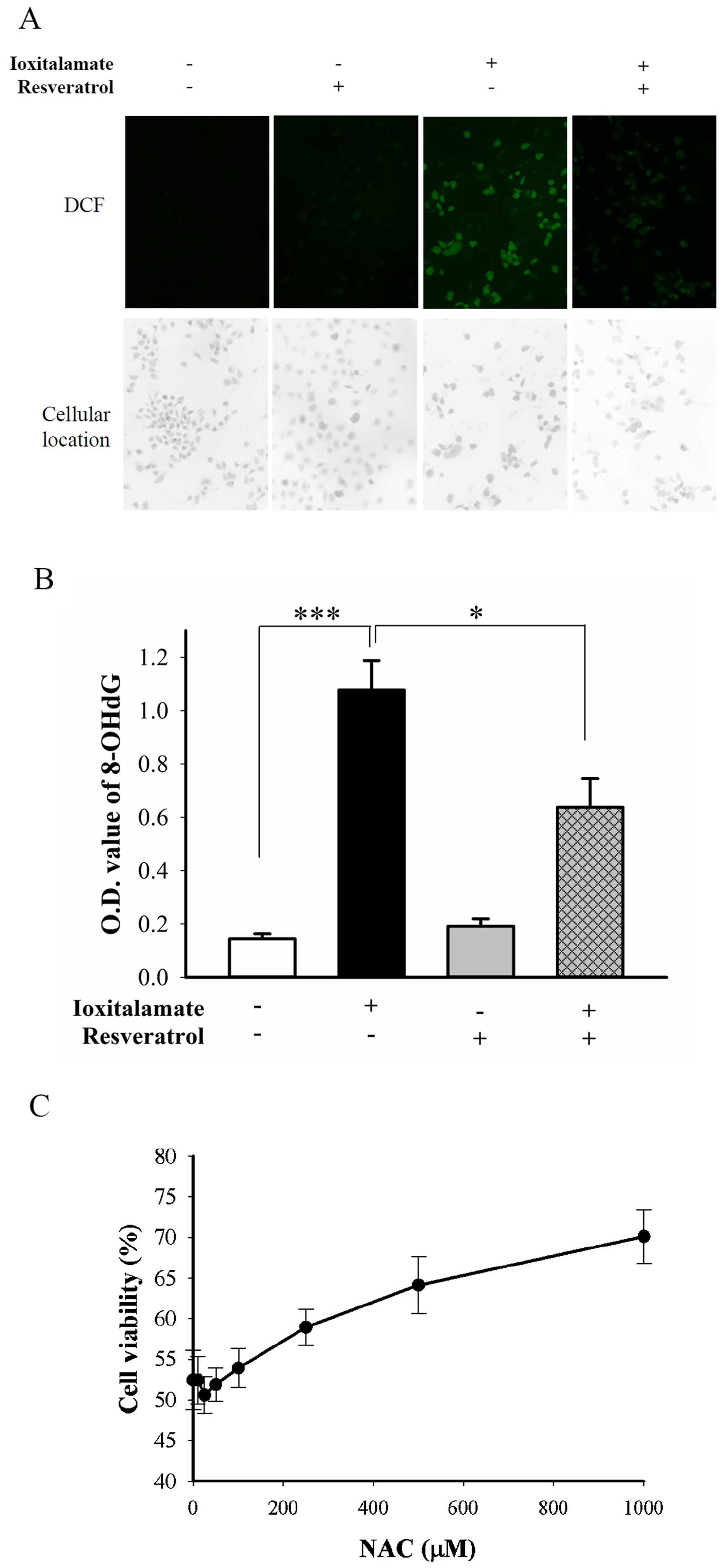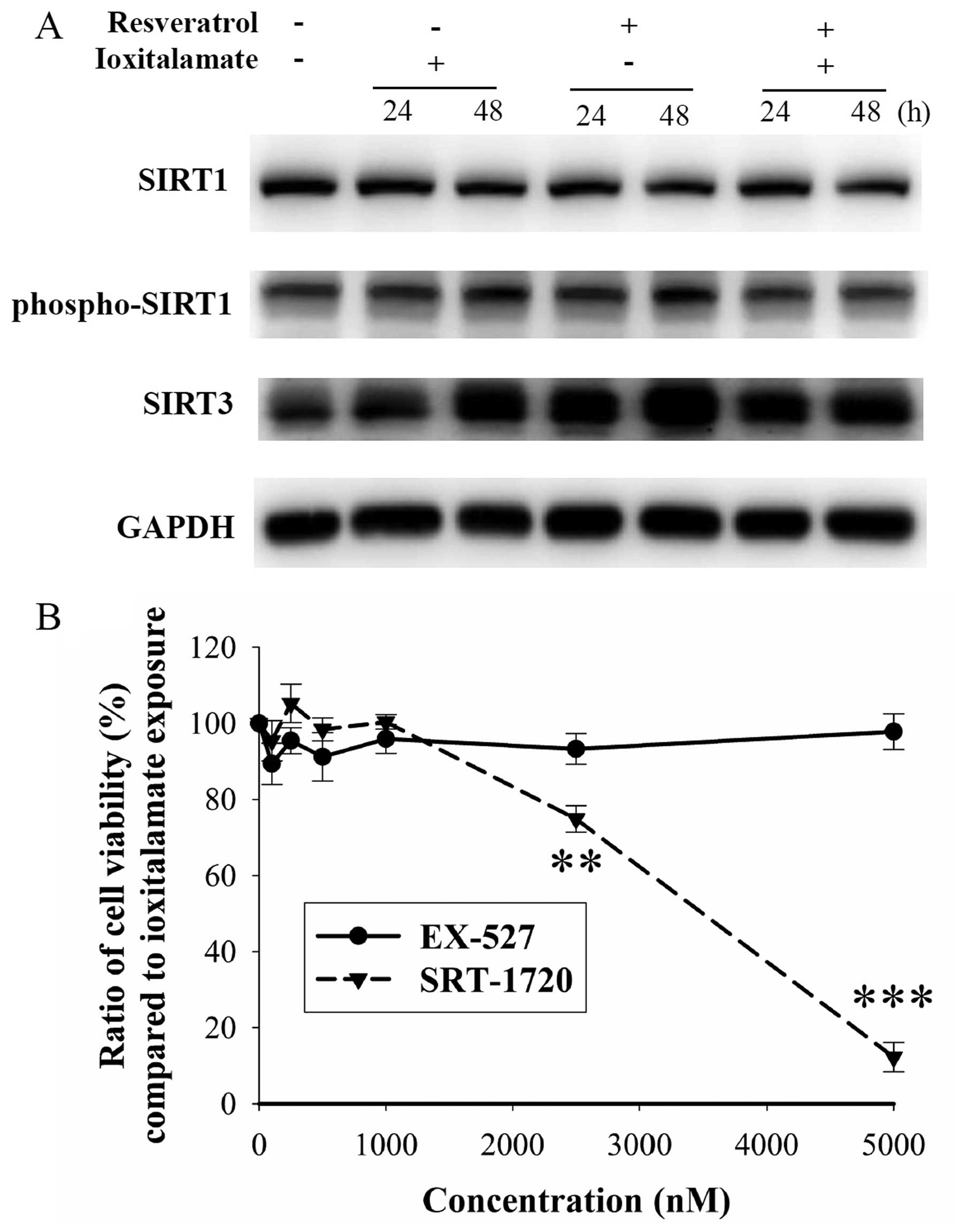|
1
|
Deray G: Dialysis and iodinated contrast
media. Kidney Int Suppl. 100:S25–S29. 2006. View Article : Google Scholar : PubMed/NCBI
|
|
2
|
Tepel M, Aspelin P and Lameire N:
Contrast-induced nephropathy: a clinical and evidence-based
approach. Circulation. 113:1799–1806. 2006. View Article : Google Scholar : PubMed/NCBI
|
|
3
|
Lai HM, Aronow WS, Chugh SS, Pudasaini B,
Goel A and Garrick R: Risk factors for hemodialysis and mortality
in patients with contrast-induced nephropathy. Am J Ther.
20:607–612. 2013. View Article : Google Scholar
|
|
4
|
Neyra JA, Shah S, Mooney R, Jacobsen G,
Yee J and Novak JE: Contrast-induced acute kidney injury following
coronary angiography: a cohort study of hospitalized patients with
or without chronic kidney disease. Nephrol Dial Transplant.
28:1463–1471. 2013. View Article : Google Scholar : PubMed/NCBI
|
|
5
|
Wong PC, Li Z, Guo J and Zhang A:
Pathophysiology of contrast-induced nephropathy. Int J Cardiol.
158:186–192. 2012. View Article : Google Scholar
|
|
6
|
Pattharanitima P and Tasanarong A:
Pharmacological strategies to prevent contrast-induced acute kidney
injury. BioMed Res Int. 2014:2369302014. View Article : Google Scholar : PubMed/NCBI
|
|
7
|
Quintavalle C, Donnarumma E, Fiore D,
Briguori C and Condorelli G: Therapeutic strategies to prevent
contrast-induced acute kidney injury. Curr Opin Cardiol.
28:676–682. 2013. View Article : Google Scholar : PubMed/NCBI
|
|
8
|
Kitada M and Koya D: Renal protective
effects of resveratrol. Oxid Med Cell Longev. 2013:5680932013.
View Article : Google Scholar :
|
|
9
|
Saldanha JF, Leal VO, Stenvinkel P,
Carraro-Eduardo JC and Mafra D: Resveratrol: why is it a promising
therapy for chronic kidney disease patients? Oxid Med Cell Longev.
2013:9632172013. View Article : Google Scholar
|
|
10
|
Ryan MJ, Johnson G, Kirk J, Fuerstenberg
SM, Zager RA and Torok-Storb B: HK-2: an immortalized proximal
tubule epithelial cell line from normal adult human kidney. Kidney
Int. 45:48–57. 1994. View Article : Google Scholar : PubMed/NCBI
|
|
11
|
Ren X, Han HJ, Lee YJ, Lee SH, Ng HY, Chae
KJ and Kim IS: Proapoptotic effect of a micropollutant
(tris-(2-chloroethyl)-phosphate) at environmental level in primary
cultured renal proximal tubule cells. J Water Health. 10:522–530.
2012. View Article : Google Scholar : PubMed/NCBI
|
|
12
|
Huang YT, Cheng CC, Lin TC, Chiu TH and
Lai PC: Therapeutic potential of sepantronium bromide YM155 in
gemcitabine-resistant human urothelial carcinoma cells. Oncol Rep.
31:771–780. 2014.
|
|
13
|
Huang YT, Lai PC, Wu CC, Hsu SH, Cheng CC,
Lan YF and Chiu TH: BDNF mediated TrkB activation is a survival
signal for transitional cell carcinoma cells. Int J Oncol.
36:1469–1476. 2010.PubMed/NCBI
|
|
14
|
Linkermann A, De Zen F, Weinberg J,
Kunzendorf U and Krautwald S: Programmed necrosis in acute kidney
injury. Nephrol Dial Transplant. 27:3412–3419. 2012. View Article : Google Scholar : PubMed/NCBI
|
|
15
|
Livingston MJ and Dong Z: Autophagy in
acute kidney injury. Semin Nephrol. 34:17–26. 2014. View Article : Google Scholar : PubMed/NCBI
|
|
16
|
Porter AG and Jänicke RU: Emerging roles
of caspase-3 in apoptosis. Cell Death Differ. 6:99–104. 1999.
View Article : Google Scholar : PubMed/NCBI
|
|
17
|
Chen J, Chen JK, Conway EM and Harris RC:
Survivin mediates renal proximal tubule recovery from AKI. J Am Soc
Nephrol. 24:2023–2033. 2013. View Article : Google Scholar : PubMed/NCBI
|
|
18
|
Suzuki C, Isaka Y, Shimizu S, Tsujimoto Y,
Takabatake Y, Ito T, Takahara S and Imai E: Bcl-2 protects tubular
epithelial cells from ischemia reperfusion injury by inhibiting
apoptosis. Cell Transplant. 17:223–229. 2008. View Article : Google Scholar : PubMed/NCBI
|
|
19
|
Lorz C, Justo P, Sanz AB, Egido J and
Ortíz A: Role of Bcl-xL in paracetamol-induced tubular epithelial
cell death. Kidney Int. 67:592–601. 2005. View Article : Google Scholar : PubMed/NCBI
|
|
20
|
Ott U, Aschoff A, Fünfstück R, Jirikowski
G and Wolf G: DNA fragmentation in acute and chronic rejection
after renal transplantation. Transplant Proc. 39:73–77. 2007.
View Article : Google Scholar : PubMed/NCBI
|
|
21
|
Hasegawa K, Wakino S, Yoshioka K,
Tatematsu S, Hara Y, Minakuchi H, Sueyasu K, Washida N, Tokuyama H,
Tzukerman M, et al: Kidney-specific overexpression of Sirt1
protects against acute kidney injury by retaining peroxisome
function. J Biol Chem. 285:13045–13056. 2010. View Article : Google Scholar : PubMed/NCBI
|
|
22
|
Chen Y, Fu LL, Wen X, Wang XY, Liu J,
Cheng Y and Huang J: Sirtuin-3 (SIRT3), a therapeutic target with
oncogenic and tumor-suppressive function in cancer. Cell Death Dis.
5:e10472014. View Article : Google Scholar : PubMed/NCBI
|
|
23
|
Morigi M, Perico L, Rota C, Longaretti L,
Conti S, Rottoli D, Novelli R, Remuzzi G and Benigni A: Sirtuin
3-dependent mitochondrial dynamic improvements protect against
acute kidney injury. J Clin Invest. 125:715–726. 2015. View Article : Google Scholar : PubMed/NCBI
|
|
24
|
Heyman SN, Brezis M, Epstein FH, Spokes K,
Silva P and Rosen S: Early renal medullary hypoxic injury from
radio-contrast and indomethacin. Kidney Int. 40:632–642. 1991.
View Article : Google Scholar : PubMed/NCBI
|
|
25
|
Heinrich MC, Kuhlmann MK, Grgic A,
Heckmann M, Kramann B and Uder M: Cytotoxic effects of ionic
high-osmolar, nonionic monomeric, and nonionic iso-osmolar dimeric
iodinated contrast media on renal tubular cells in vitro.
Radiology. 235:843–849. 2005. View Article : Google Scholar : PubMed/NCBI
|
|
26
|
Romano G, Briguori C, Quintavalle C, Zanca
C, Rivera NV, Colombo A and Condorelli G: Contrast agents and renal
cell apoptosis. Eur Heart J. 29:2569–2576. 2008. View Article : Google Scholar : PubMed/NCBI
|
|
27
|
Gunness P, Aleksa K, Kosuge K, Ito S and
Koren G: Comparison of the novel HK-2 human renal proximal tubular
cell line with the standard LLC-PK1 cell line in studying
drug-induced nephrotoxicity. Can J Physiol Pharmacol. 88:448–455.
2010. View Article : Google Scholar : PubMed/NCBI
|
|
28
|
Zager RA, Johnson AC and Hanson SY:
Radiographic contrast media-induced tubular injury: evaluation of
oxidant stress and plasma membrane integrity. Kidney Int.
64:128–139. 2003. View Article : Google Scholar : PubMed/NCBI
|
|
29
|
Goldenberg I and Matetzky S: Nephropathy
induced by contrast media: pathogenesis, risk factors and
preventive strategies. CMAJ. 172:1461–1471. 2005. View Article : Google Scholar : PubMed/NCBI
|
|
30
|
Heinrich MC, Scheer M, Heckmann M, Kuefner
MA and Uder M: Iodixanol induces apoptotic and antiproliferative
effects but no necrotic cell death in renal proximal tubular cells
in vitro. Rofo. 181:349–354. 2009. View Article : Google Scholar : PubMed/NCBI
|
|
31
|
Linkermann A, Heller JO, Prókai A,
Weinberg JM, De Zen F, Himmerkus N, Szabó AJ, Bräsen JH, Kunzendorf
U and Krautwald S: The RIP1-kinase inhibitor necrostatin-1 prevents
osmotic nephrosis and contrast-induced AKI in mice. J Am Soc
Nephrol. 24:1545–1557. 2013. View Article : Google Scholar : PubMed/NCBI
|
|
32
|
Liang X, Chen Y, Zhang L, Jiang F, Wang W,
Ye Z, Liu S, Yu C and Shi W: Necroptosis, a novel form of
caspase-independent cell death, contributes to renal epithelial
cell damage in an ATP-depleted renal ischemia model. Mol Med Rep.
10:719–724. 2014.PubMed/NCBI
|
|
33
|
Lechler P, Wu X, Bernhardt W, Campean V,
Gastiger S, Hackenbeck T, Klanke B, Weidemann A, Warnecke C, Amann
K, et al: The tumor gene survivin is highly expressed in adult
renal tubular cells: implications for a pathophysiological role in
the kidney. Am J Pathol. 171:1483–1498. 2007. View Article : Google Scholar : PubMed/NCBI
|
|
34
|
Havasi A and Borkan SC: Apoptosis and
acute kidney injury. Kidney Int. 80:29–40. 2011. View Article : Google Scholar : PubMed/NCBI
|
|
35
|
Pozo-Guisado E, Merino JM, Mulero-Navarro
S, Lorenzo-Benayas MJ, Centeno F, Alvarez-Barrientos A and
Fernandez-Salguero PM: Resveratrol-induced apoptosis in MCF-7 human
breast cancer cells involves a caspase-independent mechanism with
downregulation of Bcl-2 and NF-kappaB. Int J Cancer. 115:74–84.
2005. View Article : Google Scholar : PubMed/NCBI
|
|
36
|
Liu ML and Zhang SJ: Effects of
resveratrol on the protein expression of survivin and cell
apoptosis in human gastric cancer cells. J BUON. 19:713–717.
2014.PubMed/NCBI
|
|
37
|
Muqbil I, Beck FW, Bao B, Sarkar FH,
Mohammad RM, Hadi SM and Azmi AS: Old wine in a new bottle: the
Warburg effect and anticancer mechanisms of resveratrol. Curr Pharm
Des. 18:1645–1654. 2012. View Article : Google Scholar : PubMed/NCBI
|
|
38
|
Zheng LF, Wei QY, Cai YJ, Fang JG, Zhou B,
Yang L and Liu ZL: DNA damage induced by resveratrol and its
synthetic analogues in the presence of Cu (II) ions: mechanism and
structure-activity relationship. Free Radic Biol Med. 41:1807–1816.
2006. View Article : Google Scholar : PubMed/NCBI
|
|
39
|
Zhao X, Liu G, Shen H, Gao B, Li X, Fu J,
Zhou J and Ji Q: Liraglutide inhibits autophagy and apoptosis
induced by high glucose through GLP-1R in renal tubular epithelial
cells. Int J Mol Med. 35:684–692. 2015.PubMed/NCBI
|
|
40
|
Periyasamy-Thandavan S, Jiang M, Wei Q,
Smith R, Yin XM and Dong Z: Autophagy is cytoprotective during
cisplatin injury of renal proximal tubular cells. Kidney Int.
74:631–640. 2008. View Article : Google Scholar : PubMed/NCBI
|
|
41
|
Kreuzaler P and Watson CJ: Killing a
cancer: what are the alternatives? Nat Rev Cancer. 12:411–424.
2012. View Article : Google Scholar : PubMed/NCBI
|
|
42
|
Jiang M, Wei Q, Dong G, Komatsu M, Su Y
and Dong Z: Autophagy in proximal tubules protects against acute
kidney injury. Kidney Int. 82:1271–1283. 2012. View Article : Google Scholar : PubMed/NCBI
|
|
43
|
Schmelzle T and Hall MN: TOR, a central
controller of cell growth. Cell. 103:253–262. 2000. View Article : Google Scholar : PubMed/NCBI
|
|
44
|
Lieberthal W, Fuhro R, Andry CC, Rennke H,
Abernathy VE, Koh JS, Valeri R and Levine JS: Rapamycin impairs
recovery from acute renal failure: role of cell-cycle arrest and
apoptosis of tubular cells. Am J Physiol Renal Physiol.
281:F693–F706. 2001.PubMed/NCBI
|
|
45
|
Marti HP and Frey FJ: Nephrotoxicity of
rapamycin: an emerging problem in clinical medicine. Nephrol Dial
Transplant. 20:13–15. 2005. View Article : Google Scholar : PubMed/NCBI
|
|
46
|
Hsu SP, Tsai TJ and Chien CT: Ioxitalamate
induces renal tubular apoptosis via activation of renal efferent
nerve-mediated adrenergic signaling, renin activity, and reactive
oxygen species production in rats. Toxicol Sci. 114:149–158. 2010.
View Article : Google Scholar
|
|
47
|
Liu R, Nair D, Ix J, Moore DH and Bent S:
N-acetylcysteine for the prevention of contrast-induced
nephropathy. A systematic review and meta-analysis. J Gen Intern
Med. 20:193–200. 2005. View Article : Google Scholar : PubMed/NCBI
|
|
48
|
Nallamothu BK, Shojania KG, Saint S, Hofer
TP, Humes HD, Moscucci M and Bates ER: Is acetylcysteine effective
in preventing contrast-related nephropathy? A meta-analysis. Am J
Med. 117:938–947. 2004. View Article : Google Scholar
|
|
49
|
Zhang F, Lau SS and Monks TJ: The
cytoprotective effect of N-acetyl-L-cysteine against ROS-induced
cytotoxicity is independent of its ability to enhance glutathione
synthesis. Toxicol Sci. 120:87–97. 2011. View Article : Google Scholar :
|
|
50
|
Borra MT, Smith BC and Denu JM: Mechanism
of human SIRT1 activation by resveratrol. J Biol Chem.
280:17187–17195. 2005. View Article : Google Scholar : PubMed/NCBI
|
|
51
|
Yeung F, Hoberg JE, Ramsey CS, Keller MD,
Jones DR, Frye RA and Mayo MW: Modulation of NF-kappaB-dependent
transcription and cell survival by the SIRT1 deacetylase. EMBO J.
23:2369–2380. 2004. View Article : Google Scholar : PubMed/NCBI
|
|
52
|
Chen T, Li J, Liu J, Li N, Wang S, Liu H,
Zeng M1, Zhang Y and Bu P: Activation of SIRT3 by resveratrol
ameliorates cardiac fibrosis and improves cardiac function via the
TGF-beta/Smad3 pathwa. Am J Physiol Heart Circ Physiol.
308:H424–H434. 2015. View Article : Google Scholar
|



